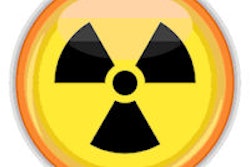
A pioneering 50,000 euro project that began in the scenic west of Norway in April aims to organize imaging protocols so that examinations can be exchanged efficiently between hospital groups. The scheme is seen as a necessary step to optimize workflow and protect patients from excess radiation exposure.
Starting with gastrointestinal and lung CT and MR protocols, standardization will expand to the prostate in autumn 2014 and the central nervous system in 2015, gradually incorporating other subspecialty areas during its four-year duration and with all CT and MRI protocols due to be standardized by 2018.
 Integration between PACS and RIS has been a troublesome journey, but the problems are now resolved, according to Dr. Aslak Aslaksen. Image courtesy of Katherine Ferguson.
Integration between PACS and RIS has been a troublesome journey, but the problems are now resolved, according to Dr. Aslak Aslaksen. Image courtesy of Katherine Ferguson.
The purpose of the project is to standardize imaging procedures for technicians in primary centers so that patients don't have to be re-examined in Stavanger and Bergen. The western part of Norway, one of the country's four specialist healthcare regions, comprises four hospital groups along with the university hospitals in Stavanger and Bergen that form secondary regional referral centers for radiation therapy and specialist cancer treatment, including robotic treatment for prostate cancer.
"Suspected cancer patients will present with symptoms, undergo CT or MRI that will confirm disease. Another exam may specify type of cancer and the treatment needed," said Dr. Aslak Aslaksen, head of radiology at Haukeland University Hospital in Bergen, Norway. "The philosophy is that if technical procedures are standardized, patients won't have to undergo procedures again at the university hospital where they are sent for surgical, radiation, or other treatment."
The new standardization in CT and MRI has been specifically requested by the authorities, in line with the European law on radiation protection that states all European radiology departments must optimize exam procedures, a move echoed in the European Society of Radiology (ESR)'s initiative for safe imaging, he explained.
Standardization of protocols will have a positive effect on unnecessary radiation exposure for patients and reduce their time in radiology departments, and this will subsequently ease patient throughput, saving staff time and cutting the government's costs through obviating repeat exams, he continued. There is no straight answer as to how widespread the problem of repeat imaging is because there is no survey or known data on the topic, but Aslaksen cites complaints from physicians and radiologists on the subject of retakes due to inferior images sent from primary care hospitals.
The project is the latest facet of the government's aim to reform Norwegian healthcare. The campaign began 10 years ago with its decision to divide healthcare into five -- later, four -- regions rather than let each county control its hospitals, which led to disparate quality in care and in waiting times.
It is hoped that protocol standardization will lead to better coordination between radiology departments and improved patient throughput between small and big hospitals, with a focus on as short a time as possible between diagnosis and treatment.
"Physicians tell us that imaging across primary and university hospitals has often been a bottleneck to treatment, not just because of the time needed for retakes before treatment can begin, but also because of administration time to get the images from one hospital to the other," Aslaksen said. "The government is keen to cut down on initial administration time for image transfer. According to a government announcement three years ago, the only waiting time should be for diagnosis and therapy. This should be less than ten days between GP [general practitioner] referral and diagnosis, and less than 20 days until treatment begins."
A decade ago, west Norway deployed Infobroker, a Finnish software and hardware system to allow the easy exchange of images between the nonmerged PACS across the region's four units. This obviated the slower courier exchange of CDs. The tool is now fully functioning and is in daily use for the transfer of images taken from the region's 1 million residents and is a well- established part of the multilateral drive to shorten times in the "GP referral to treatment" flow.
In the next step, a merged PACS for the region's radiology images is due to be implemented within the next three to five years. The vendor neutral archive project for all medical images began three years ago with nonradiological images. Until then, Infobroker, which is used on a daily basis and has greatly improved workflow, will continue to be used in the state sector, he noted.



















